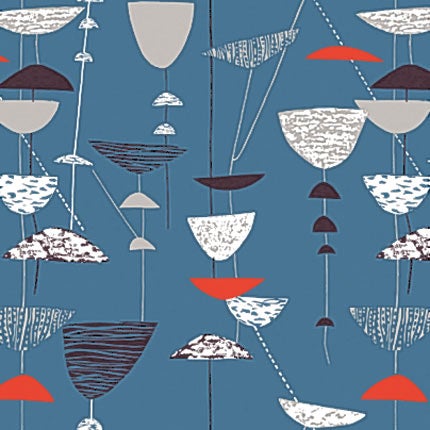The Secret History Of: Lucienne Day's Calyx fabric

Your support helps us to tell the story
From reproductive rights to climate change to Big Tech, The Independent is on the ground when the story is developing. Whether it's investigating the financials of Elon Musk's pro-Trump PAC or producing our latest documentary, 'The A Word', which shines a light on the American women fighting for reproductive rights, we know how important it is to parse out the facts from the messaging.
At such a critical moment in US history, we need reporters on the ground. Your donation allows us to keep sending journalists to speak to both sides of the story.
The Independent is trusted by Americans across the entire political spectrum. And unlike many other quality news outlets, we choose not to lock Americans out of our reporting and analysis with paywalls. We believe quality journalism should be available to everyone, paid for by those who can afford it.
Your support makes all the difference.As the Southbank Centre launched its celebration of the 60th anniversary of the Festival of Britain this week, it seems fitting to recall the secret history of one of Britain's most important textile designers, who came to prominence during the festival.
Lucienne Day and her husband Robin (both of whom died last year) transformed British design in the post-war era; he made furniture, she created stunning abstract designs for wallpapers and textiles.
Indeed last year for its bicentenary, high-end furniture store Heals created an interpretive collection of furniture and accessories using three of her most famous designs Calyx, Helix and Sunrise.
Day was discovered by Heals fabrics director Tom Worthington. She said: "I had already designed a couple of things for Heal's so I took Calyx along to them. Tom Worthington said he would produce it for me but only pay me half the fee of 20 guineas because he was certain he wouldn't sell a yard."
The meeting formed the basis of a collaboration that lasted 20 years and produced some 70 patterns.
Her designs drew on the English tradition of patterns based on plant forms – grasses and flowers – but she transformed them and was influenced by the work of Kandinsky and Klee. Her textiles now seem emblematic of the post-war era and even if you have never heard of her her work seems familiar.
Calyx was originally created for the 1951 festival. Robin had been commissioned to design two pavilions featuring his furniture and Lucienne's textiles. Her design received international praise.
Day was a passionate believer in affordable design and worked for the mass market rather than collectors. She liked the idea that people might not be able to afford a painting for the wall but could have a fabulous pair of curtains.
"I wanted the work I was doing to be seen by people and used by people," she said. "They had been starved of interesting things for their homes in the war years."
There is an exhibition of the Days' work at Pallant House Gallery, Chichester, East Sussex, until 26 June.
Join our commenting forum
Join thought-provoking conversations, follow other Independent readers and see their replies
Comments